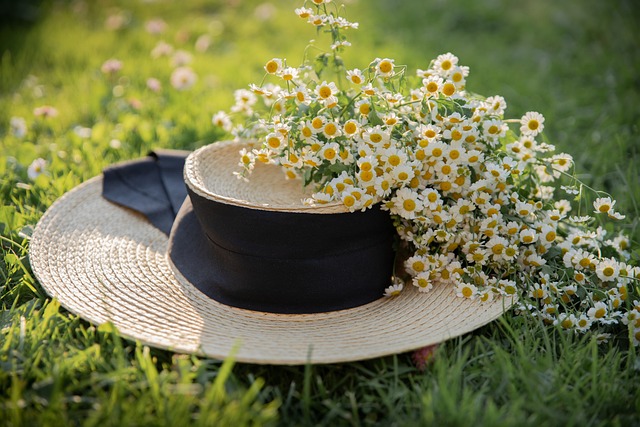Artificial turf is a revolutionary landscaping solution offering a low-maintenance, durable, and aesthetically pleasing alternative to natural grass. It benefits both residential and commercial properties by eliminating traditional lawn care needs, reducing water consumption, minimizing chemical usage, and providing year-round greenery. Installation involves meticulous preparation, and upkeep is simple, involving regular cleaning, trimming, and replacing damaged blades. This eco-friendly option enhances curb appeal, saves costs, and creates inviting outdoor spaces for all.
“Consider a lush, vibrant landscape that requires minimal upkeep – artificial turf offers this and more for both residential and commercial spaces. This innovative solution is transforming outdoor spaces across the globe. From reducing water usage to eliminating labor-intensive maintenance, low-maintenance turf installation presents a game-changing alternative to natural grass. Explore the benefits, discover installation insights, and learn how to maintain this sustainable and attractive option in our comprehensive guide.”
- Understanding Artificial Turf: A Low-Maintenance Alternative
- Benefits of Installing Low-Maintenance Turf for Residential Properties
- Commercial Applications: Why Choose Artificial Turf?
- The Installation Process: A Step-by-Step Guide
- Maintenance Tips to Keep Your Artificial Turf Looking Great
Understanding Artificial Turf: A Low-Maintenance Alternative

Artificial turf is a revolutionary alternative to traditional grass, offering a low-maintenance solution for both residential and commercial properties. This innovative product mimics the look and feel of natural grass while requiring significantly less upkeep. With artificial turf installation, you can enjoy a lush, green landscape year-round without the hassle of frequent watering, mowing, or fertilizing.
This durable and versatile material is designed to withstand heavy foot traffic, making it an ideal choice for high-use areas in commercial spaces like offices, hotels, and retail centers. Moreover, artificial turf is eco-friendly, as it reduces water consumption and minimizes the need for chemical fertilizers and pesticides. Its ease of cleaning and low-maintenance nature make it a practical option for busy professionals and business owners looking to enhance their outdoor spaces without spending countless hours on maintenance.
Benefits of Installing Low-Maintenance Turf for Residential Properties

Residential property owners are increasingly turning to low-maintenance turf for their outdoor spaces, and for good reason. One of the primary benefits is the reduced upkeep required compared to natural grass. This means less time spent mowing, fertilizing, and watering, which can be a significant advantage for busy homeowners. With its durable and synthetic construction, low-maintenance turf can withstand heavy foot traffic without showing signs of wear and tear, making it perfect for active families and pets.
Additionally, these turfs offer year-round appeal with consistent greenery and color, regardless of seasonal changes or climate variations. They are also eco-friendly alternatives to traditional grass, as they use less water and don’t require pesticides or herbicides. This not only saves residents money but also contributes to a greener environment. Moreover, low-maintenance turf installations can increase the curb appeal and value of residential properties, making them an attractive and sensible choice for homeowners looking to enhance their outdoor living spaces.
Commercial Applications: Why Choose Artificial Turf?

Commercial properties, from office parks to shopping centres, are increasingly opting for artificial turf as a sustainable and aesthetically pleasing solution. This trend is driven by several key advantages that cater to modern business needs. Artificial turf offers a low-maintenance turf installation alternative to natural grass, eliminating the time and resources required for regular mowing, watering, and fertilising. This not only reduces operational costs but also contributes to environmental sustainability by minimising water usage.
Moreover, artificial turf provides year-round greenery and visual appeal, enhancing the overall look and feel of commercial spaces. It is particularly beneficial in high-traffic areas where natural grass might struggle to thrive. With its durability and ease of cleaning, artificial turf ensures a pristine appearance without the hassle associated with traditional lawn maintenance. This makes it an attractive option for businesses seeking to create inviting and welcoming environments for employees, customers, and visitors alike.
The Installation Process: A Step-by-Step Guide

The installation process for low-maintenance artificial turf involves several key steps, ensuring a long-lasting and visually appealing finish. It begins with thorough preparation of the site, removing any existing grass, debris, and leveling the ground to create a smooth surface. This step is crucial for achieving proper drainage and an even base. Next, a subbase is installed, typically made from compacted rock or soil, providing stability and support for the synthetic turf.
After the subbase is laid, the artificial turf rolls are unrolled and securely attached using specialized adhesive or stapling tools. The turf is cut to fit the desired shape and size of the area, ensuring a precise and clean edge. This method offers a quick and efficient solution for both residential and commercial properties, eliminating the need for traditional lawn maintenance.
Maintenance Tips to Keep Your Artificial Turf Looking Great

Keeping your artificial turf looking its best is surprisingly easy with a few simple maintenance tips. After installation, regular cleaning is key to prevent dirt and debris buildup. A quick sweep or use of a soft-bristled brush can remove surface particles, while a gentle hose wash will help keep the fibers clean and flexible. Trimming around edges and obstacles ensures a neat appearance, preventing grass from looking patchy or uneven.
For optimal performance, avoid heavy foot traffic immediately after installation, allowing the turf to settle for a few weeks. Over time, some fiber compression is normal, but significant damage should be addressed promptly. Regularly checking for loose or damaged blades and replacing them as needed will keep your artificial turf looking fresh and vibrant. A low-maintenance turf installation requires minimal effort, ensuring your outdoor space remains beautiful with little upkeep.
Artificial turf offers a compelling solution for both residential and commercial spaces, providing an attractive, low-maintenance alternative to traditional grass. From reduced water usage to minimal upkeep, its benefits are clear. Whether enhancing outdoor living areas or transforming public spaces, proper installation and regular maintenance ensure artificial turf remains a vibrant, functional asset. Embracing this innovative technology can lead to beautiful, sustainable landscapes that thrive with less effort.
